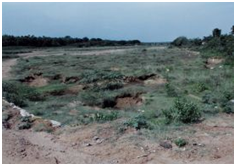
Introduction
Sand mining refers to the extraction of sand from riverbeds and seashores for construction activities and for minerals such as gold, silver, silicates et cetera. It is legal when authorised or permitted by relevant governments, with assurances that existing rules and regulation will be followed. Illegal sand mining (hereafter ISM) on the other hand—the focus of this article—includes all other unauthorised extraction activities. In India, the Ministry of Forests and the Environment (MoEF) has formulated guidelines on sand mining for both riverbeds and coastal areas (Coastal Regulation Zone, 2010; MoEF Notification, 2010). The Ministry of Mines is also mandated to govern sand mining.
The increasing demand for sand (for booming real estate and infrastructure projects, for instance), together with weak governance and rampant corruption are facilitating uncontrolled and illegal mining of sand and gravel in the rivers and seas of India. ISM has been thriving in various Indian states including Madhya Pradesh, Bihar, Haryana, Karnataka, Goa, Andhra Pradesh, Rajasthan, Chattisgarh, Orissa and West Bengal (12 March 2012, Express News Service). It is also illegally practiced in other states like Kerala, Tamil Nadu, Maharastra, Gujarat, Uttar Pradesh, Uttarkhand, et cetera.
Click here for the factsheet (4 pages): FS_010_India Sand Mining

The project ENVJUSTICE has received funding from the European Research Council (ERC) under the European Union’s Horizon 2020 research and innovation programme (grant agreement No. 695446)